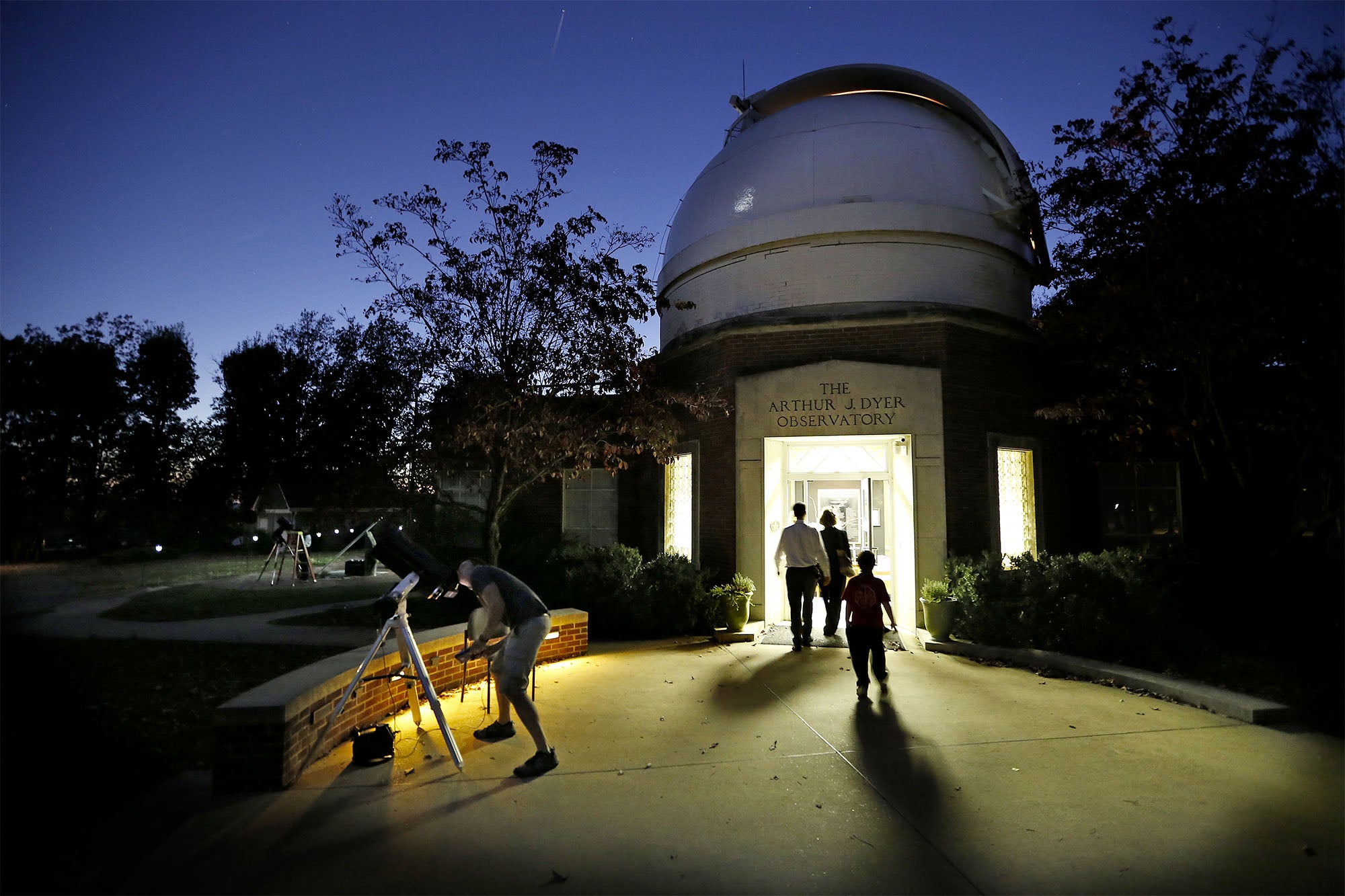Vanderbilt University established its first astronomical observatory very early in its history. The university admitted its first students in 1875, and an observatory was opened a year later in only the third building erected on campus. The observatory was equipped with a six-inch aperture refracting telescope built by the firm of Thomas Cooke of York, England, and a four-inch Merz meridian circle telescope, also acquired in Europe. Despite being well-equipped, the early observatory did not have a dedicated astronomer and was not well used.
In 1883 the university placed Nashville native Edward Emerson Barnard in charge of the campus observatory. Although he lacked formal education and was only 26, his training at a local photography studio and his growing reputation as an amateur astronomer with several prize-winning discoveries to his name made him the ideal candidate for the job. Along with taking his first courses in mathematics, physics and foreign languages at the university, Barnard furthered his astronomical research and made several key discoveries during his career at Vanderbilt, including seven comets. Barnard would go on to become one of America’s most noted astronomers for his discovery of 16 comets, the fifth satellite of Jupiter and Barnard’s Star, as well as his successful application of photography to stellar astronomy, his micrometer measurements of stellar positions, and his research of dark nebulae. Vanderbilt’s Barnard Observatory, named in his honor by the Board of Trust in 1942, was eventually razed in 1952 to make way for Rand Hall, and its telescopes were placed in storage.
In 1943 the family of John Ferguson had donated a 24-inch fused-quartz mirror and mounting for a new telescope, spurring interest in the construction of a modern Vanderbilt observatory to house it. Physics and astronomy professor Carl K. Seyfert was tasked with overseeing the project, and he teamed with alumni and civic and business leaders—chief among them Nashville Bridge Company founder Arthur J. Dyer, BE 1891—to raise funds. The donation of materials and in-kind services from some 80 firms and foundations largely made the observatory’s construction possible.
The ideal location for the new observatory was found about 10 miles south of Vanderbilt’s main campus on a secluded hilltop in southern Davidson County. Located 1,131 feet above sea level, the shade of the wooded site protected the observatory from direct sunlight, which could negatively impact the telescope’s clarity, and the surrounding hills and distance from the city reduced smoke, haze and light pollution. Construction commenced in March 1952, and the Arthur J. Dyer Observatory and its telescope were dedicated on Dec. 27, 1953. Many of the university’s original 1875 astronomical instruments and artifacts are housed at the observatory today.
In the decades since, Vanderbilt Dyer Observatory has emerged as a center for research and discovery in Middle Tennessee, hosting numerous teacher workshops, field trips, summer camps, star-gazing parties, online education resources, the Bluebird on the Mountain concert series and more each year.
Learn more about the history of Vanderbilt Dyer Observatory.
